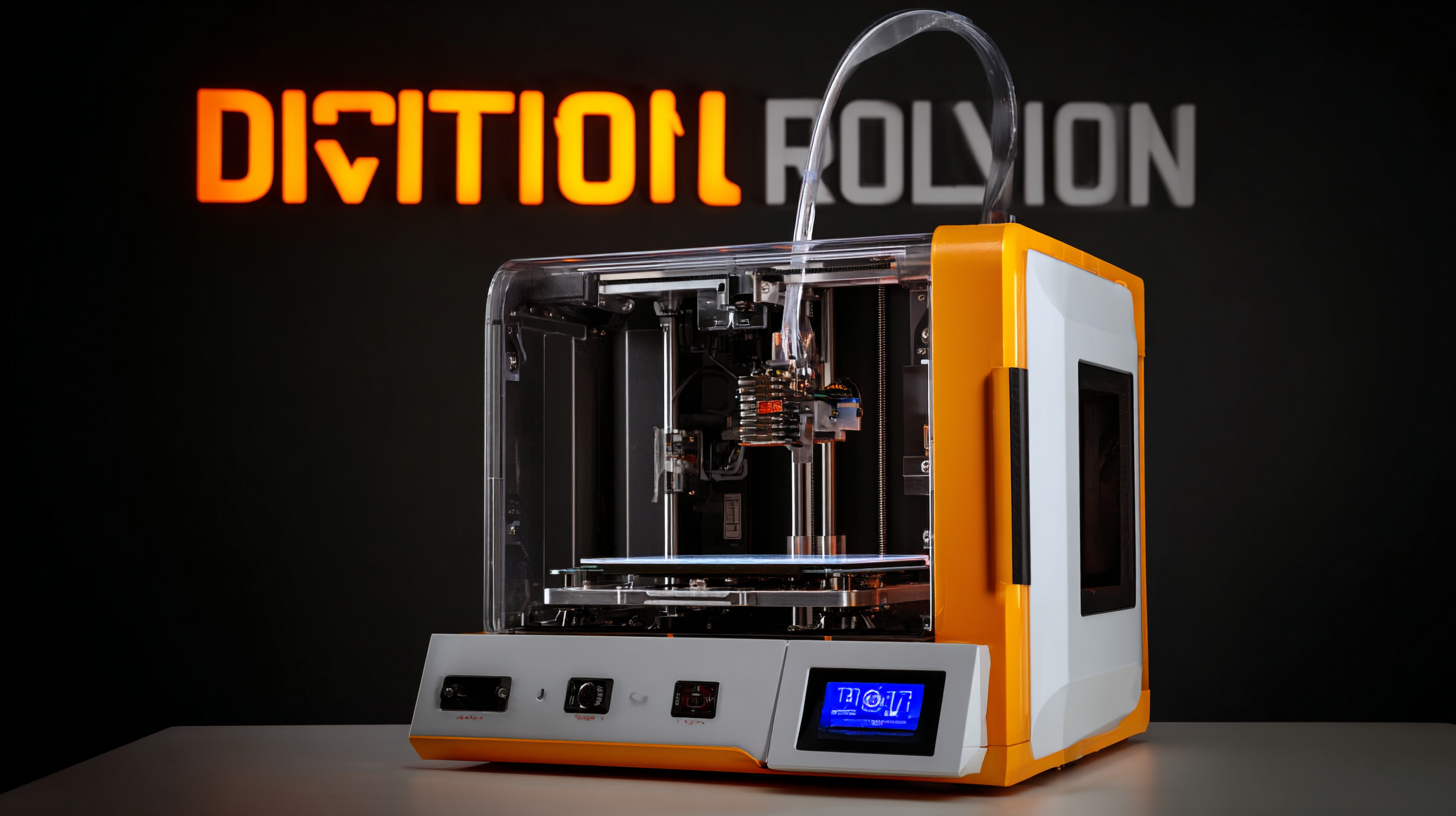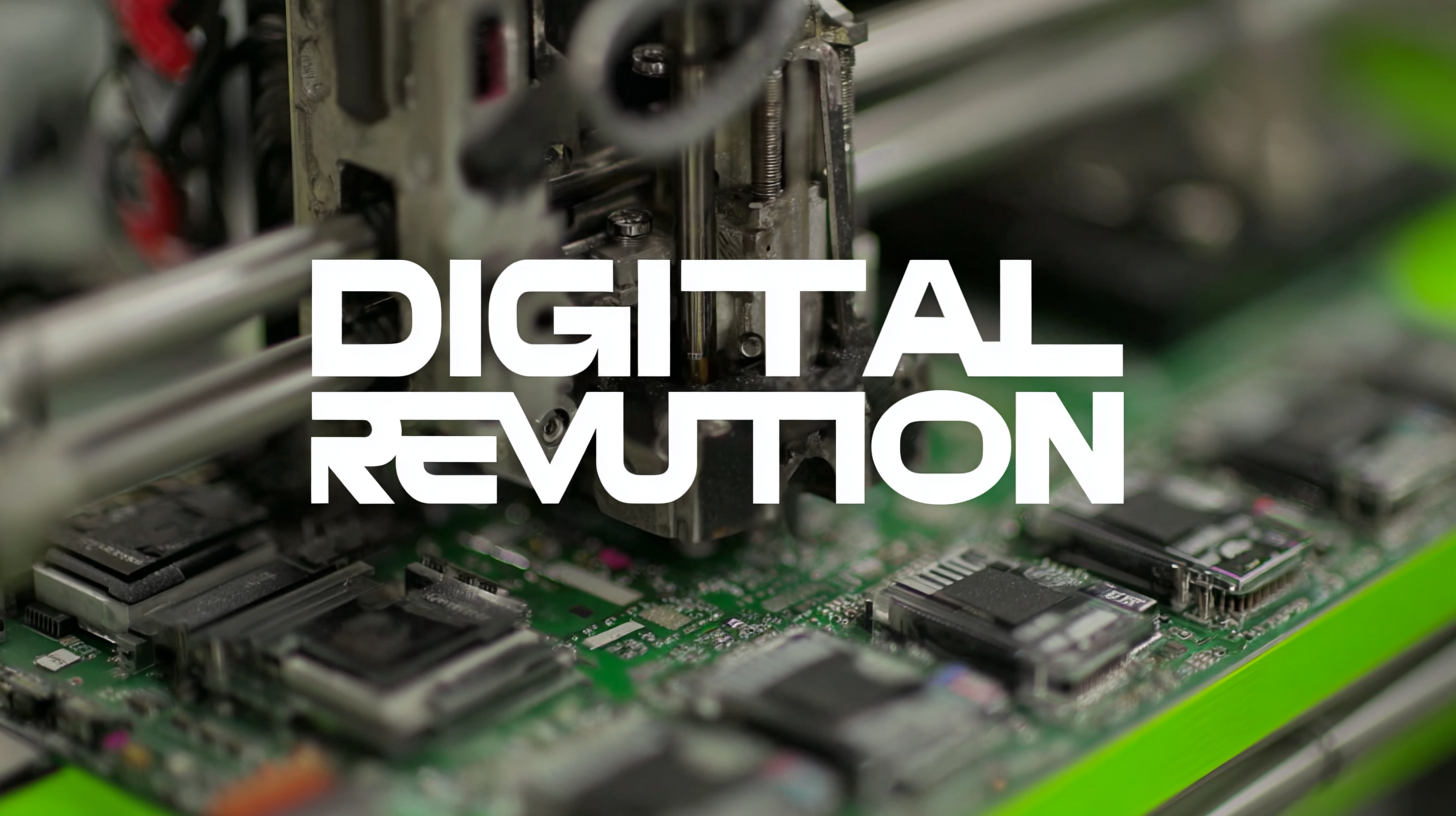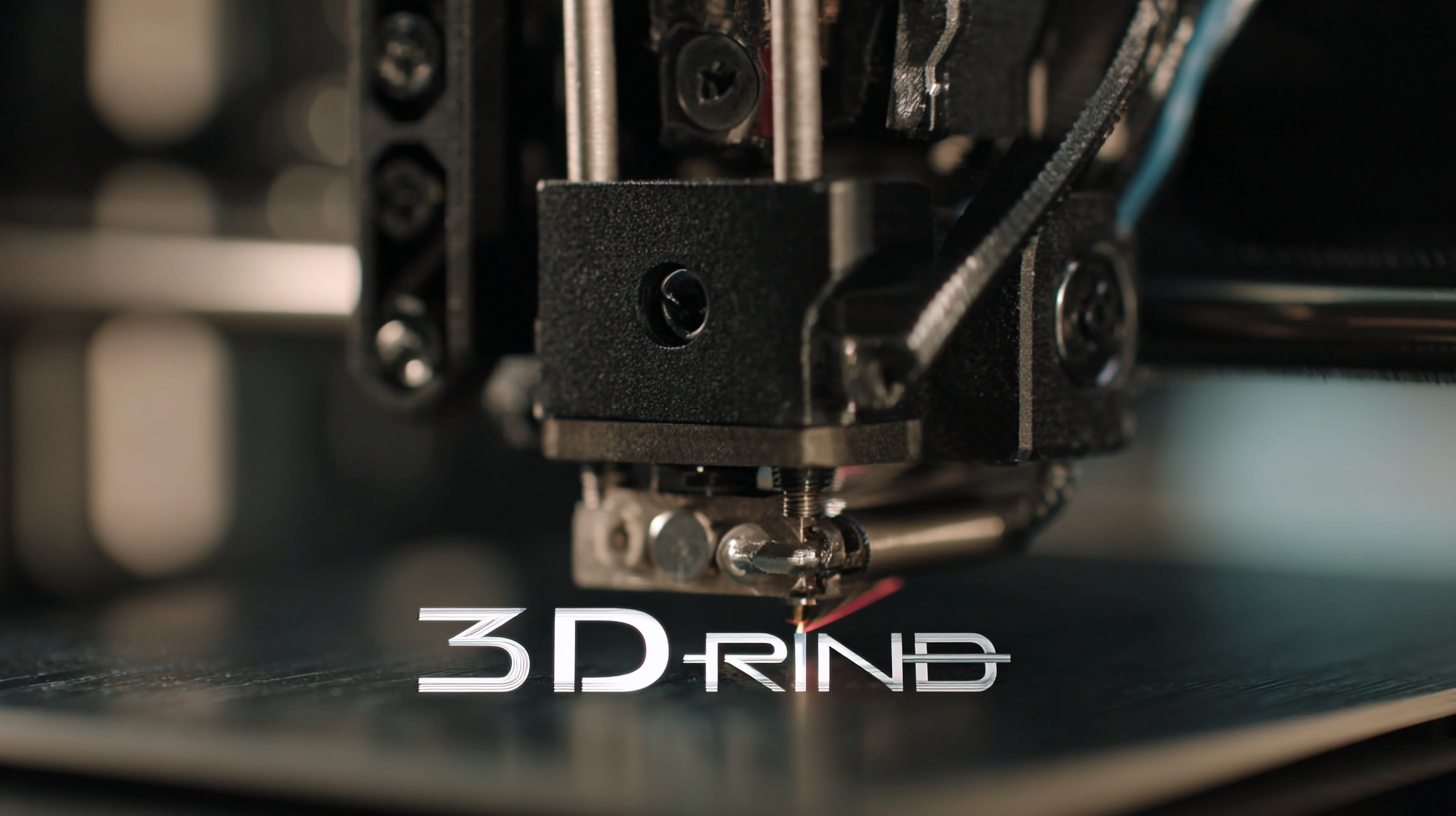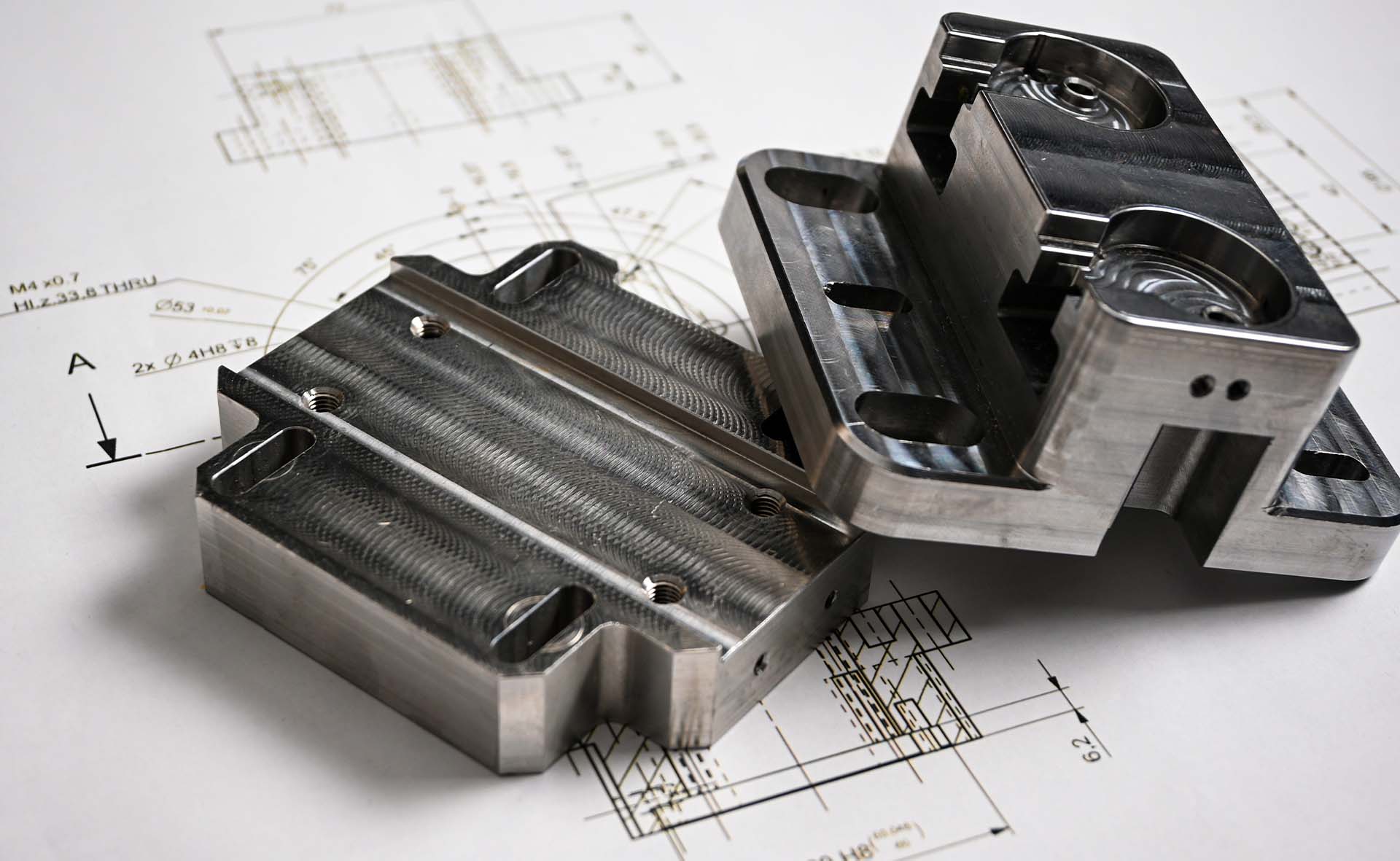
The landscape of manufacturing is undergoing a profound transformation, largely driven by the advancements in rapid 3D printing technologies. According to a recent report by MarketsandMarkets, the global 3D printing market is expected to reach USD 34.8 billion by 2026, growing at a CAGR of 23% from 2021. This surge is fueled by the increasing demand for rapid prototyping and custom fabrication across various industries, including aerospace, automotive, and healthcare. However, despite its potential, the rapid 3D printing sector faces several challenges, such as material limitations, technological inconsistencies, and scalability issues. As manufacturers continue to explore the benefits of rapid 3D printing, understanding these problems becomes crucial for optimizing performance and paving the way for innovative applications that can reshape industries.

The digital revolution has profoundly transformed the landscape of rapid 3D printing techniques, ushering in an era of unprecedented innovation and efficiency. As traditional manufacturing methods struggle to keep pace, the integration of digital technologies has allowed for the creation of intricate designs and rapid prototyping with remarkable precision. Software advancements in modeling and simulation have facilitated seamless transitions from concept to creation, enabling designers to iterate quickly and explore a multitude of possibilities without incurring significant costs.
Moreover, the accessibility of cloud-based platforms and user-friendly 3D printing applications has democratized the technology, allowing small businesses and hobbyists to participate in the manufacturing process. This shift not only fosters creativity and individuality in product design but also encourages collaboration across various industries. Consequently, the impact of the digital revolution is evident in the rise of customized, on-demand production, significantly reducing waste and optimizing resource usage. As this digital transformation continues to evolve, the future of rapid 3D printing techniques seems poised for even greater advancements, further reshaping how we conceive, design, and produce.
The digital revolution in rapid 3D printing techniques is reshaping industries across the globe, driving innovation and efficiency like never before. Among the most pivotal methods is Fused Deposition Modeling (FDM), which uses thermoplastic filaments to create objects layer by layer. This technique has gained popularity due to its affordability and ease of use, making it accessible for both hobbyists and professionals. FDM is ideal for creating prototypes and small production runs, allowing designers to quickly iterate on their ideas.
Another significant technique shaping the industry is Selective Laser Sintering (SLS). This method employs a laser to fuse powdered material into a solid structure, resulting in exceptionally strong parts that often require no support material. SLS shines in producing functional prototypes and end-use parts with complex geometries. The ability to work with a variety of materials, including nylon and metal powders, allows manufacturers to innovate through enhanced design freedom and production capabilities. Together, these rapid 3D printing techniques not only streamline production but also open new avenues for creativity and customization in various fields, from aerospace to healthcare.

In the ever-evolving landscape of additive manufacturing, the importance of navigating import and export certifications in 3D printing has become increasingly critical. As recent developments highlight, the U.S. Bureau of Industry and Security has imposed strict Export Administration Regulations (EAR) on the manufacturing and exporting of 3D-printed firearms, underscoring the need for compliance among businesses operating within this realm. Companies must ensure they are fully aware of the legal frameworks governing their products, as penalties for non-compliance can be severe. According to a report from the International 3D Printing Research Institute, around 40% of 3D printing businesses identified regulatory challenges as a significant barrier to growth in the last fiscal year.
Furthermore, as 3D printing technology permeates various industries, from consumer products to medical devices, the ability to navigate these regulations becomes even more crucial for companies looking to expand their international market reach. The market for 3D printing is projected to grow to $62.79 billion by 2028, driven by innovations and increased adoption across sectors. Stakeholders should prioritize understanding certification requirements and forging partnerships with compliance specialists to ensure their products meet international standards, thus capitalizing on lucrative global opportunities without the risk of legal pitfalls.
Implementing 3D printing in your business can be a transformative step towards innovation and efficiency. The first step in this process is to assess your needs and the specific applications of 3D printing that could benefit your operations. Begin by identifying areas where rapid prototyping could enhance product development or where custom parts might streamline manufacturing. Engage your team in brainstorming sessions to uncover potential challenges and opportunities, ensuring that everyone’s insights contribute to a well-rounded strategy.
Once your objectives are clear, it’s crucial to select the right 3D printing technology tailored to your business requirements. Evaluate various options such as Fused Deposition Modeling (FDM), Stereolithography (SLA), or Selective Laser Sintering (SLS), each offering unique advantages depending on the materials and final applications. After choosing a technology, invest in adequate training for your team to maximize the effective use of the printer. Establish a workflow that integrates 3D printing seamlessly into your existing processes, enabling your business to leverage the full potential of this digital revolution.

The future of 3D printing is set to evolve dramatically as industry standards and compliance become increasingly important in shaping the technology's trajectory. In recent years, we have witnessed a surge in the adoption of additive manufacturing across various sectors, including medical packaging and construction. For instance, the medical packaging market is anticipated to grow significantly, emphasizing the need for innovative and compliant solutions. This growth points to the necessity for 3D printing methods that not only meet but exceed regulatory standards to ensure safety and efficacy.
A notable advancement is the completion of Europe's first ISO/ASTM compliant 3D printed social housing project, showcasing the relevance of adhering to established industry standards. This project, which utilized cutting-edge 3D construction technology, underscores a pivotal shift toward compliance and quality in the construction industry. Additionally, recent innovations like automated scripting for ensuring compliance in 3D printing processes are paving the way for more streamlined production methods, ultimately contributing to the industry's overall credibility and appeal. As 3D printing continues to reshape various fields, aligning with industry standards will be essential for fostering trust and facilitating further adoption of these transformative technologies.
| Technique | Material | Speed (mm/hour) | Cost ($/kg) | Compliance Category |
|---|---|---|---|---|
| Fused Deposition Modeling (FDM) | PLA, ABS | 50 - 300 | 20 - 50 | ISO 9001 |
| Stereolithography (SLA) | Resin | 20 - 150 | 100 - 300 | ASTM D256 |
| Selective Laser Sintering (SLS) | Nylon, Metal | 50 - 400 | 50 - 200 | ISO/ASTM 52900 |
| Digital Light Processing (DLP) | Resin | 30 - 120 | 150 - 350 | FDA 21 CFR Part 177 |
| Binder Jetting | Metal, Sand | 200 - 600 | 60 - 250 | ISO 2768 |

| Cookie | Duration | Description |
|---|---|---|
| cookielawinfo-checkbox-analytics | 11 months | This cookie is set by GDPR Cookie Consent plugin. The cookie is used to store the user consent for the cookies in the category "Analytics". |
| cookielawinfo-checkbox-functional | 11 months | The cookie is set by GDPR cookie consent to record the user consent for the cookies in the category "Functional". |
| cookielawinfo-checkbox-necessary | 11 months | This cookie is set by GDPR Cookie Consent plugin. The cookies is used to store the user consent for the cookies in the category "Necessary". |
| cookielawinfo-checkbox-others | 11 months | This cookie is set by GDPR Cookie Consent plugin. The cookie is used to store the user consent for the cookies in the category "Other. |
| cookielawinfo-checkbox-performance | 11 months | This cookie is set by GDPR Cookie Consent plugin. The cookie is used to store the user consent for the cookies in the category "Performance". |
| viewed_cookie_policy | 11 months | The cookie is set by the GDPR Cookie Consent plugin and is used to store whether or not user has consented to the use of cookies. It does not store any personal data. |

